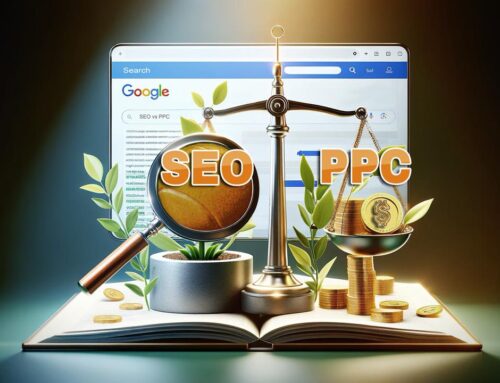Introduction
Influencer marketing is a form of social media marketing that leverages endorsements and product mentions from influencers—individuals who have a dedicated social following and are viewed as experts within their niche. It is a strategy that has grown in popularity and effectiveness in recent years, with brands partnering with influencers to achieve various marketing objectives, including increasing brand awareness, reaching new audiences, and boosting sales.
In today’s digital age, consumers are increasingly turning to influencers for their purchasing decisions. These influencers, who range from high-profile celebrities to micro-influencers with a few thousand dedicated followers, have the power to sway their audiences’ opinions and behavior. Their recommendations can seem more authentic and trustworthy than traditional forms of advertising, making them a valuable asset for brands looking to connect with consumers on a more personal level.
In this guide, you will learn the ins and outs of influencer marketing, specifically how to identify, connect with, and collaborate with influencers to expand your brand’s reach and credibility. This guide will take you through the process step by step, offering practical advice, strategies, and tips along the way. We will explore what makes a good influencer, how to find influencers that align with your brand, how to approach and negotiate with influencers, and how to measure the success of your influencer marketing campaigns.
Whether you’re a small business owner looking to dip your toes into influencer marketing, a marketing professional wanting to refine your strategy, or simply curious about the process, this guide is for you. Let’s dive in and explore the exciting world of influencer marketing!
Table of Contents
- Identifying the Right Influencers
- Connecting with Influencers
- Collaborating with Influencers
- Measuring Success
- Final Thoughts
- Sources
Identifying the Right Influencers
Identifying the right influencers is a crucial first step in your influencer marketing strategy. It’s not just about finding someone with a large number of followers, but finding someone who aligns with your brand values, has an engaged audience, and has the ability to drive action among their followers.
Who is Your Target Audience?
Before you begin searching for influencers, it’s essential to have a clear understanding of your target audience. Who are they? What are their interests? Which social media platforms do they use most often? Knowing your audience inside and out will help you identify influencers who can effectively reach and resonate with them.
Influencer Tiers
Influencers can be broadly categorized into several tiers based on their follower count:
- Nano-influencers: 1,000 – 10,000 followers
- Micro-influencers: 10,000 – 50,000 followers
- Mid-tier influencers: 50,000 – 500,000 followers
- Macro-influencers: 500,000 – 1,000,000 followers
- Mega-influencers: Over 1,000,000 followers
Each tier offers different benefits. For example, nano- and micro-influencers typically have higher engagement rates and more personal relationships with their followers, while macro- and mega-influencers have a larger reach.
Identifying Potential Influencers
There are several ways to find potential influencers:
- Manual Search: Look for influencers on social media platforms where your target audience is most active. Use relevant hashtags and keywords to find influencers in your niche.
- Influencer Platforms: These are online platforms that connect brands with influencers. They can make the search process easier and more efficient.
- Competitor Analysis: See which influencers your competitors are partnering with. This can give you ideas for potential influencers to collaborate with.
Vetting Influencers
Once you’ve identified potential influencers, it’s time to vet them. Look at the quality and relevance of their content, their engagement rates, the demographics of their followers, and their previous brand partnerships. Remember, it’s not just about the numbers; it’s about the quality of their influence.
Connecting with Influencers
Once you’ve identified influencers who align with your brand, the next step is to connect with them. This involves reaching out to them, building a relationship, and eventually, proposing a collaboration.
Initial Contact
When reaching out to influencers, it’s important to personalize your message. Show that you’ve taken the time to understand their content and audience. Be clear about who you are, what your brand is about, and why you believe a partnership would be beneficial for both parties.
Building Relationships
Building genuine relationships with influencers is crucial for long-term success. This doesn’t happen overnight, so be patient and persistent. Engage with their content, show appreciation for their work, and find common ground.
Proposing Collaboration
When you feel the time is right, propose a collaboration. Be clear about what you’re offering and what you expect in return. Negotiate the terms of the partnership, including compensation, campaign timeline, and content expectations.
Collaborating with Influencers
Successful influencer collaborations require clear communication, respect for the influencer’s creative freedom, and a mutual understanding of goals and expectations.
Clear Communication
Ensure you communicate your campaign goals, brand guidelines, and content expectations clearly. However, remember to leave room for the influencer’s creative input; after all, they know their audience best.
Respect for Creative Freedom
While it’s important to communicate your brand guidelines, it’s equally important to respect the influencer’s creative freedom. Allow them to present your brand in a way that will resonate with their audience. Overly scripted content can come off as inauthentic and may not engage the audience as effectively.
Content Expectations
Before launching the campaign, agree on the type of content the influencer will create. This could be a product review, a tutorial, a giveaway, or a simple product mention in a post. Be sure that the content type aligns with your campaign goals and the influencer’s content style.
Contractual Agreement
Once you’ve agreed on the terms of the collaboration, it’s recommended to have a formal agreement in place. This contract should outline the terms of the partnership, including deliverables, deadlines, compensation, content usage rights, and any other important details.
Measuring Success
The final step in your influencer marketing campaign is to measure its success. This is crucial for understanding the effectiveness of your campaign and informing future strategies.
Key Performance Indicators (KPIs)
Identify KPIs that align with your campaign goals. These could include:
- Reach and Impressions: The number of people who saw the influencer’s content.
- Engagement: The number of likes, comments, shares, and saves the content received.
- Website Traffic: The number of visitors to your website or a specific landing page linked from the influencer’s content.
- Sales: The number of products sold as a result of the campaign. This can be tracked using unique discount codes or affiliate links.
- Brand Awareness: This can be more challenging to measure, but surveys and brand sentiment analysis can provide insights.
Campaign Analysis
After the campaign ends, analyze your KPIs to assess the success of the campaign. Did you achieve your goals? What worked well? What could be improved? Use these insights to refine your strategy for future campaigns.
Ongoing Relationship
Consider maintaining an ongoing relationship with influencers who brought significant value to your brand. This could be in the form of long-term ambassador programs or recurring collaborations.
Final Thoughts
Influencer marketing is more than just a trend; it’s a powerful marketing strategy that can significantly boost your brand’s visibility, reach, and credibility. The key to a successful influencer marketing campaign lies in identifying the right influencers, building genuine relationships, creating collaborative partnerships, and continually measuring and refining your approach.
Remember, influencers are not merely marketing tools but valuable partners who can help elevate your brand in the eyes of consumers. Treating them with respect, providing them with creative freedom, and compensating them fairly will go a long way in fostering a successful partnership.
Sources
- The State of Influencer Marketing 2023: Benchmark Report
- The Rise of Influencer Marketing in Digital Strategy
- The Impact of Social Media Influencers on Buying Intentions
- Measuring the Impact of Influencer Marketing










